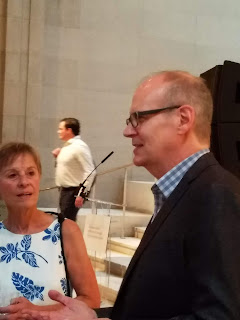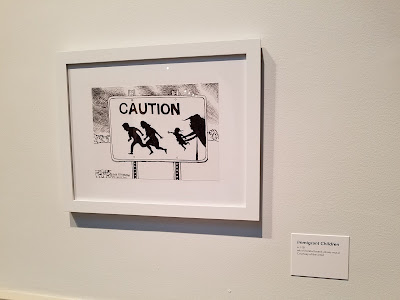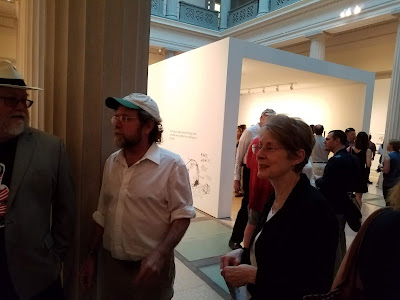by Alexandra Bowman
In light of the renewed conversation about racism in our country after the death of George Floyd, another sub-discussion has emerged. Works of art, films, and media properties with subjects relevant to the events of the past few weeks are being reexamined--and the 2016 Disney film Zootopia has once again become a topic of discussion.
The film famously attempted to tackle about 45 social and political issues. It seems, at first glance, that racism is the one central issue to the film, but closer analysis of the filmmakers’ intentions and the film’s storyline itself prove that the film is not centrally anti-racist, but anti-bias. And the reason for this, as I’ll explain, is to help explain bias to children from a bird’s-eye view, and should not be condemned for its mission--to help teach the very young to seek out and eliminate prejudice within themselves.
“You certainly look at the world through a different lens after telling a story like this… Maybe I can do better. Maybe I’m looking at things the wrong way. I’ve been thinking about how to have those conversations [about bias] with my kids… the process of the movie has already changed how I talk to them, and how I want them to hopefully perceive the world differently,” stated co-director Jared Bush.
“I think in my own family. When I look at my little boy, I see a very Asian face. I first and foremost want to instill that he should be proud of who he is no matter what. You know, this world, it’s not easy to not be white. So, as much kind of inner strength and inner confidence and belief that he can do anything is what I want to instill. I hope this movie is part of that,“ says co-head of Story Josie Trinidad.
While some may argue that what the filmmakers intended to do doesn’t matter, and that the thing they ultimately created speaks for itself while their motives in creating the film are of little-to-no relevance, given that recent attacks on Zootopia have been leveled toward its creators--attacks that accuse them of being insensitive in their discussion of complex issues within the film and putting forth a sloppy, incomplete product--it is important that these creators’ intentions be publicized. According to their words, they intended to create a piece of popular art encouraging tolerance.
When talking about Zootopia in 2020, in light of new and complex conversations about racism, we have to realize what Zootopia is.
In Part Three of the behind-the-scenes featurettes, the filmmakers speak about and show clips from an ABC documentary released in 1970, called The Eye of the Storm, in which a teacher of a class of white children conducts a social experiment with her students. She has half of her students put on small black collars. The teacher immediately set rules and limitations for those children to abide by that were intended to be perceived instantly as unfair. Later that day, the teacher gave students an academic test, and the students who wore collars performed significantly worse having been told that they were inferior. Some students even broke down crying over their new inferior social status.
The teacher states in the documentary that she hoped to teach these children about the arbitrariness of racism. The filmmakers explain that this documentary was deeply influential for them in creating the film, not only for themselves in thinking about that arbitrariness of societally-imposed labels, but also with regard to the impact that can come from teaching young children about bias in ways they can understand.
The filmmakers were inspired by the problem of racism to create a film about bias. They did not, however, seek to create a film about racism, nor to create a film explaining it.
Bias is just one element of racism, and racism is just one kind of bias. Zootopia is ambitious to a fault, seemingly attempting to tackle tokenism, police brutality, regionalism, sexism, racial slurs, and racism more broadly. These are all issues and behaviors that result from the problem of bias. Racism is, of course, incredibly complex, and so is bias. But the concept at the center of bias--assuming something about someone based on their appearance or observable traits, is slightly easier to boil down for the sake of a kids’ film.
Producer Clark Spencer spoke about the need to simplify, which came with an enormous sense of responsibility. “On this film more than any other, this has been a very difficult story to nail down,” he said. “We were dealing with this important topic, and it needed to be told in a very elegant way… it’s a responsibility. They shouldn’t all be enormous ideas, but there should be something very optimistic and very hopeful in our storytelling that allows kids, teenagers, adults, to relate to that story and makes them think about something.”
This is a movie intended to teach children about loving your neighbor and being able to recognize bias in yourself. It is about avoiding relying on generalizations about the many that will cause you to create conclusions about the individual. It is not, at least directly, about racism.
“In this world, predator and prey have figured out a way to coexist in the same city. But what we’re going to find out is that coexistence isn’t as utopian as you might think. There is truly a problem in the city And that is the fundamental part that gets to the idea of bias, about two groups that assume something about somebody else,” says Spencer.
Exactly. Zootopia creates a problem in a fictional world--that predator and prey animals must now live together in coexistence, and it isn’t working as well as the city’s Thomas More-derived name would suggest, as the film quickly demonstrates. Then it uses that very fictional problem--that revolves around, remember, talking animals not getting along--to allude to macrocosmic issues plaguing the human world today.
The conflict within Zootopia’s story alludes to the problem of racism, but any direct ties between Zootopia’s story about bias and the ongoing problem of racism in the United States are overextrapolations. Zootopia does not appear to stake its plot on the delineations between individual animal species--it draws its main distinctions between predators and prey. If the filmmakers sought to make a film with direct, literal statements about race to be carried literally into our human, 21st-century lives, they will have made a film that suggests there are only two races of human beings. It feels safe to assume that, if someone managed to work their way up to the best animation studio in the world, this is not something they believe.
Jared Bush comments on this universality in Part Three of the documentary. “I think that’s one of the biggest things for us. It’s not a specific group it’s not a specific race, it’s not a gender, it’s none of those things. It’s simply two groups that do not get along, and one group that’s feeling lesser than… For me, in thinking about what are we trying to say--it should feel universal.”
Ultimately, the people who made Zootopia set out to tell a basic animal fable about bias, are following in the steps of a tradition as old as Aesop. It is unreasonable to throw out a film, or no longer be willing to learn from it or be entertained by it holistically as a work of art, because it doesn’t perfectly accomplish its many goals.
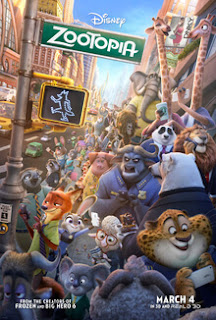 Zootopia is not intended to teach about racism specifically, but if a parent wants to use the film in a dinner conversation with young children about events going on in the United States right now, it is certainly a good introduction for very young children to these profound struggles and issues plaguing our world. And Zootopia should not by any means be the only thing a parent shows their child to teach them about racism.
Zootopia is not intended to teach about racism specifically, but if a parent wants to use the film in a dinner conversation with young children about events going on in the United States right now, it is certainly a good introduction for very young children to these profound struggles and issues plaguing our world. And Zootopia should not by any means be the only thing a parent shows their child to teach them about racism.
And for those of us who are no longer children living in this complex world, Zootopia is an entertaining film that reminds us to be tolerant of those who are different from us, who we might expect to be one way but are in reality another.
“In this world of animals, where the animals are so different from one another, those things that are common are where they find that connection, and realize, ‘You’re not so different from me,’” stated Howard. “You may look different from me, you were brought up differently, but in the end, we all care about the same things. And we all deserve the respect that we want from each other. We all deserve to be happy in our lives. We deserve love, we deserve equality. And that’s why I think these movies are so powerful, because they are modern fables. We’re able to talk about things that are very very difficult, and we’re able to bring into conversation things that are kind of awkward to talk about. But that’s what the film is about.”
It is also unreasonable to expect Disney to set out to make a film under the umbrella of the Aesop’s Fable model and capture every piece of nuance regarding one of the biggest social issues plaguing our world today. No filmmaker would walk into creating a movie with the intent of “explaining racism.” It would be wrong of their audience to accuse them of doing so. Further, to say that the filmmakers failed to create a way to explain racism to children is to assume “explaining racism” what they sought out to do.
If Zootopia wanted to perhaps shield itself from the critique that it oversimplifies—a critique that, perhaps surprisingly, only one Rotten Tomatoes reviewer leveled upon the film’s release in 2016—it could have put an explanatory statement before its opening scene. Dreamworks’ 1998 film The Prince of Egypt, opened with a black title card and the following in white text:
“The motion picture you are about to see is an adaptation of the Exodus story. While artistic and historical license has been taken, we believe that this film is true to the essence, values, and integrity of a story that is a cornerstone of faith for millions of people worldwide. The biblical story of Moses can be found in the book of Exodus.”
Zootopia could have said something that would convey the following, “This is a family movie about a complex issue. We took artistic license—not only to make the story more entertaining when adapted into a film, but also to keep that film to a 90-minute runtime. This film is about a serious subject that is foundational to the lives of millions, but we believe this captures the ESSENCE of, or an introduction to, the story we want to tell.”
However, the film’s unspoken premise arguably serves in place of that statement. Zootopia is a Disney film, about talking animals, descended from the Aesop’s fable, intended for children. Animal fables have been used for centuries--think Aesop telling “The Fox and the Grapes” in the sixth century BCE--to simplify issues to teach children moral lessons. By definition, a fable is a simplification of an idea, simplified for the benefit of children who come of age in a complex world and must gradually come to understand complex ideas.
Clark Spencer mentions in Part Three of the documentary that the Disney team actually hired Dr. Shakti Butler, President and Founder of World Trust Educational Services, as a diversity consultant and advisor. Butler speaks about what she hoped Zootopia would accomplish with its immense reach as a Disney film:
“Disney’s role in creating culture is profound,” says Butler. “Culture teaches you who you are, where your place is in the world. And a lot of it is implicit. So if I go to school, and I see all the former principals are all white and they’re all male, I’m learning about power. If you’re going to create a society that’s equitable, you can’t do it without changing culture. And so when we shift culture, and children can see themselves inside of a story, and that they can play all different kinds of roles. That degree of flexibility is very important. Prejudice, of course, is something that everybody has. But where does prejudice come from? It comes from the ways that we are taught to be biased. And those two elements are linked together. And they’re also linked to the larger system of inequity.”
 The way the film works with the image of the police force is certainly up for debate. It is at least worth noting that the filmmakers made the issue of bias central to its look at the police as well. Judy Hopps begins the film with the explicit goal of “wanting to make the world a better place” while not realizing her own bias, and then spends the rest of the movie realizing it in the context of her role as a police officer, and helps the rest of the force realize their own prejudice. At a minimum, this is a good step. After all, isn’t that one of the ultimate goals of the current conversation about policing in this country? To help officers realize bias within themselves and manage it?
The way the film works with the image of the police force is certainly up for debate. It is at least worth noting that the filmmakers made the issue of bias central to its look at the police as well. Judy Hopps begins the film with the explicit goal of “wanting to make the world a better place” while not realizing her own bias, and then spends the rest of the movie realizing it in the context of her role as a police officer, and helps the rest of the force realize their own prejudice. At a minimum, this is a good step. After all, isn’t that one of the ultimate goals of the current conversation about policing in this country? To help officers realize bias within themselves and manage it?
Some have argued that Zootopia paints an entirely positive picture of police--which ignores Judy’s character arc and key moments in the storyline. In the middle of the film, Chief Bogo, a water buffalo (i.e. prey animal), says of Nick Wilde as a potential witness in an investigative case, “you think I’m going to believe a fox?” After Judy teaches Chief Bogo that, as he spells it out, “that the world has always been broken and that’s why we need good cops,” Bogo is later shown welcoming Nick to the police force.
It is probably clear that I am not dealing with the kind of suffering so many are during this time. It is a privilege to be able to sit and write out and publish an op-ed defending a Disney movie amidst an ongoing crisis of racial injustice and police brutality in this country.
I think that the question of whether this film is culturally renounced (or “canceled,” as the young’uns are calling it now) is not unimportant.
Back in 2015, I had just finished a tough freshman year of high school. Having transferred to a different high school for sophomore year, I had to rebuild myself--to find something that I was good at, that I would stand out for. I loved popular culture and literature, particularly The Lord of the Rings and Doctor Who, but I couldn’t quite place why. I knew I loved these series’ ethical and emotional depth, but I hadn’t yet mentally grasped what about that depth appealed to me. Going into my sophomore year of high school, I began to work with my interests in illustration and literature, and had begun working towards understanding my goals as a student and person in the world.
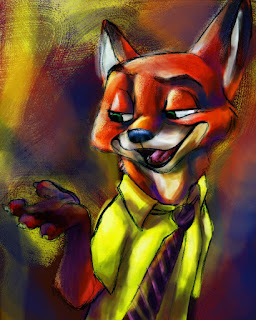 |
| Nick Wilde by Alex Bowman, April 2016 |
Zootopia helped me to, even as a 16-year-old, start to wrap my head around the issue of tolerance, and how even those who consider themselves tolerant are likely to have seeds of bias, and even bigotry, inside them.
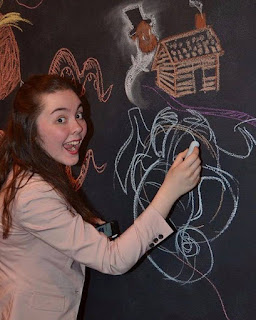 |
| photo by Bruce Guthrie |
If Zootopia is somehow “cancelled,” or made socially or culturally unacceptable to enjoy, generations of children will miss the chance to not only learn about the basics of tolerance--and perhaps even realize within themselves the potential of film to touch future generations. I hope that Zootopia can remain a beloved modern classic that will stay alive to do so.
Alexandra Bowman is a freelance illustrator, political cartoonist, and fine artist from Washington, D.C. She serves as the Editorial Political Cartoonist for Our Daily Planet, a climate news platform. She serves as an in-house illustrator for Georgetown University’s Office of Communications.
Alex is a member of the National Cartoonists Society and the Cartoonists Club of Great Britain, and is the youngest current member of the Association of American Editorial Cartoonists. She also currently serves as the Satire Correspondent on The Economist's Kevin "Kal" Kallaugher's webseries, "Satire Can Save Us All." During the Summer of 2020, she is interning for Voice of America, for whom she will be creating illustrations to be published across VOA's social media platforms.
Alex is also the creator of “The Hilltop Show,” Georgetown University’s political comedy show, which seeks to present campus, national, and international news to a wide audience in an entertaining package. More information about the show can be found at hilltopshow.com.
Alex has illustrated three children's books and has had work published by BBC News, BBC Books, Puffin Books, the Georgetown University Institute of Politics and Public Service, and Penguin Random House UK. Her work has been featured by a variety of groups on social media, including Disney XD and The Late Show with Stephen Colbert.
Alexandra Bowman is a freelance illustrator, political cartoonist, and fine artist from Washington, D.C. She serves as the Editorial Political Cartoonist for Our Daily Planet, a climate news platform. She serves as an in-house illustrator for Georgetown University’s Office of Communications.
Alex is a member of the National Cartoonists Society and the Cartoonists Club of Great Britain, and is the youngest current member of the Association of American Editorial Cartoonists. She also currently serves as the Satire Correspondent on The Economist's Kevin "Kal" Kallaugher's webseries, "Satire Can Save Us All." During the Summer of 2020, she is interning for Voice of America, for whom she will be creating illustrations to be published across VOA's social media platforms.
Alex is also the creator of “The Hilltop Show,” Georgetown University’s political comedy show, which seeks to present campus, national, and international news to a wide audience in an entertaining package. More information about the show can be found at hilltopshow.com.
Alex has illustrated three children's books and has had work published by BBC News, BBC Books, Puffin Books, the Georgetown University Institute of Politics and Public Service, and Penguin Random House UK. Her work has been featured by a variety of groups on social media, including Disney XD and The Late Show with Stephen Colbert.









